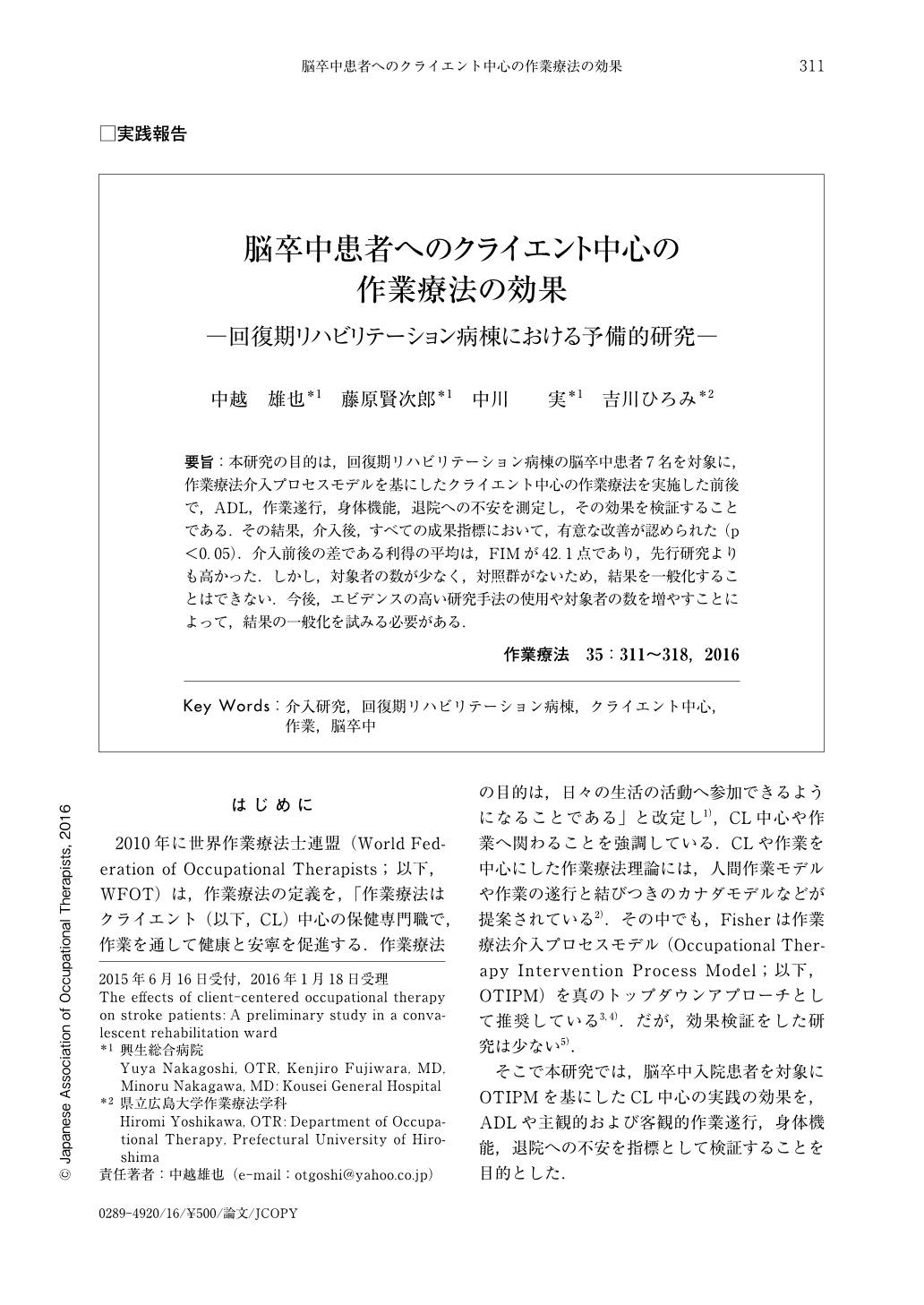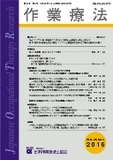Japanese
English
- 販売していません
- Abstract 文献概要
- 1ページ目 Look Inside
- 参考文献 Reference
- サイト内被引用 Cited by
要旨:本研究の目的は,回復期リハビリテーション病棟の脳卒中患者7名を対象に,作業療法介入プロセスモデルを基にしたクライエント中心の作業療法を実施した前後で,ADL,作業遂行,身体機能,退院への不安を測定し,その効果を検証することである.その結果,介入後,すべての成果指標において,有意な改善が認められた(p<0.05).介入前後の差である利得の平均は,FIMが42.1点であり,先行研究よりも高かった.しかし,対象者の数が少なく,対照群がないため,結果を一般化することはできない.今後,エビデンスの高い研究手法の使用や対象者の数を増やすことによって,結果の一般化を試みる必要がある.
The purpose of this study was to evaluate the effects of client-centered occupational therapy based on an Occupational Therapy Intervention Process Model at a convalescent rehabilitation ward. Seven stroke patients participated in the study, which was based on a before-after design. The outcome evaluated activities of daily living, occupational performance, body function and anxiety to leave the hospital. As a result, all evaluations have improved significantly after intervention (p<0.05). The change after intervention of activities of daily living (average change in Functional Independence Measure:42.1) was higher than previous research. However, because this study had few subjects and there was no control group, the results are not generalizable. Future studies will show the need to generalize results by using the study design with convincing evidence and more subjects.

Copyright © 2016, Japanese Association of Occupational Therapists. All rights reserved.


